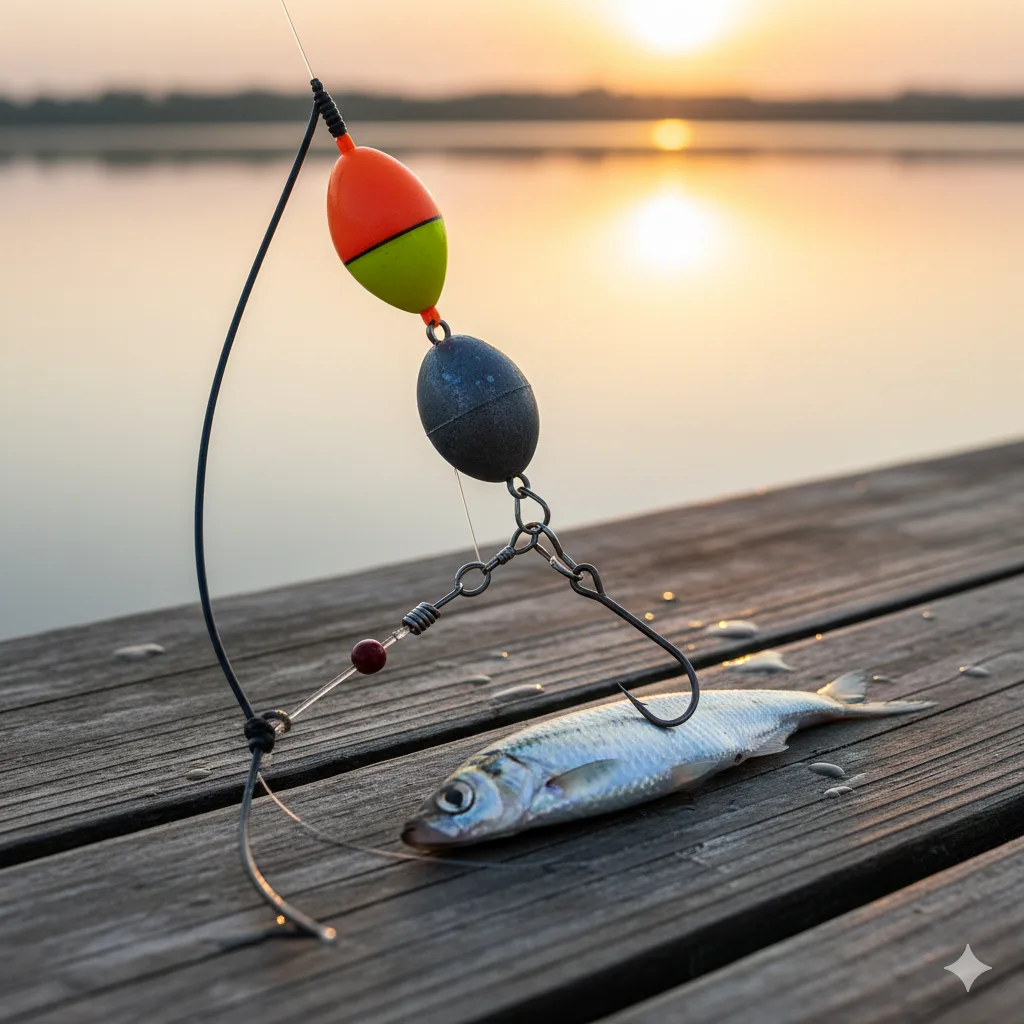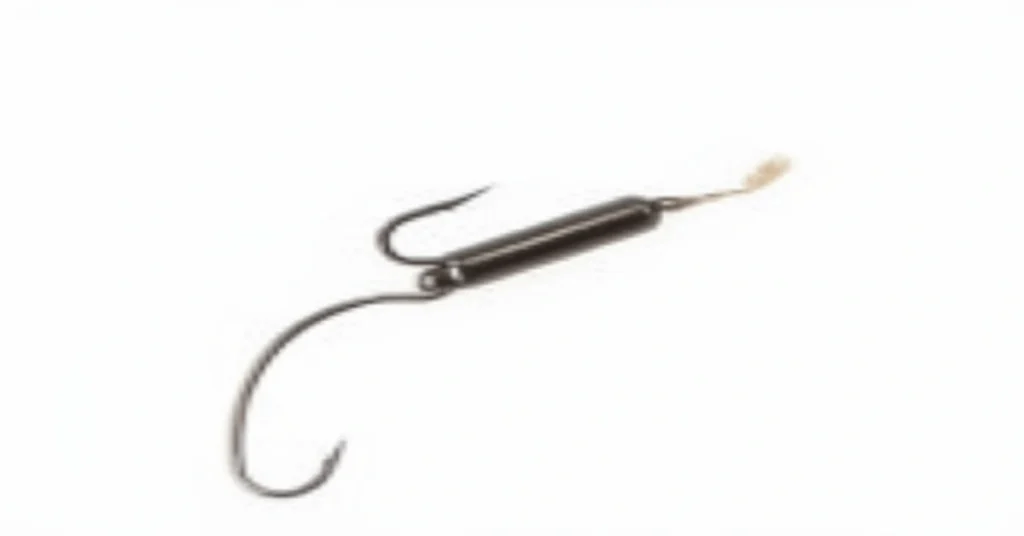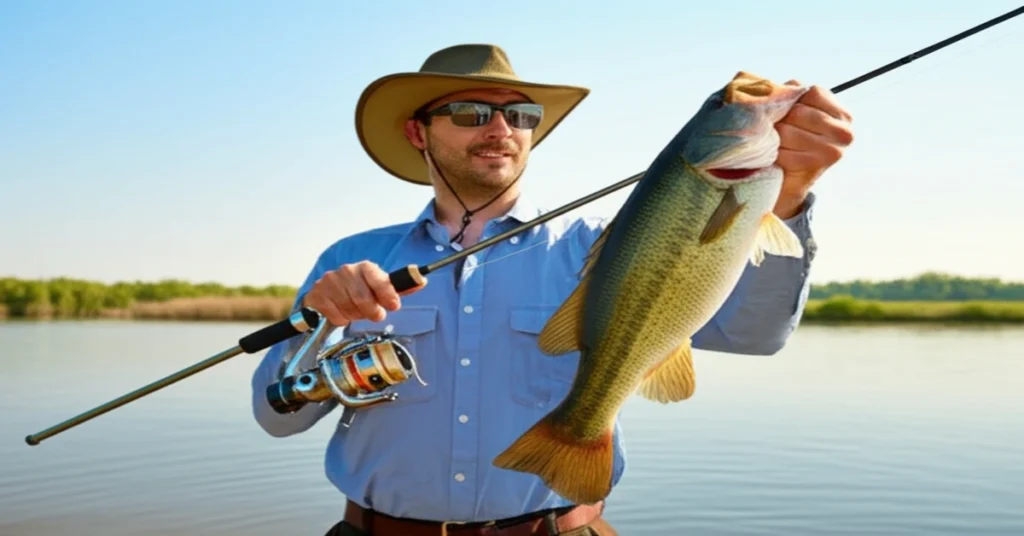From freshwater streams to ocean coastlines, live bait is a game-changer. This guide breaks down the essential rigs and techniques you need to master bait fishing and increase your catch rate in 2025.
Table of Contents
- Live Bait Rigs Demystified
- Bottom Bouncers & Still Fishing Setups
- Floats & Bobber Rigs for Suspended Fish
- Rigs for Trolling & Drifting
- Choosing & Caring for Your Bait
- Hooking & Presenting Live Bait
- Essential Tackle for Live Bait Fishing
- Rigs Tailored for Top Species
- Advanced Tactics & Troubleshooting
- Safety First on the Water
- Quick Questions, Expert Answers
Live Bait Rigs Demystified
A live bait rig is more than just a hook and a worm; it’s a carefully crafted system to present your offering in the most natural way possible. These setups capitalize on the natural scent, movement, and vibration of living prey to trigger a feeding response that artificial lures often can’t match.
Why Live Bait Rigs are so Effective
- Ultimate Attraction: Nothing beats the real thing. Live bait’s scent and struggle are a dinner bell for hungry predators.
- Natural Action: Rigs are designed to let the bait move freely, mimicking its natural behavior without resistance.
- Versatility: You can adapt live bait rigs for virtually any fish in any environment, from murky lakes to clear ocean water.
- High Strike-to-Catch Ratio: Fish are more likely to commit to a live bait, holding on long enough for a solid hookset.
- Targeting Trophy Fish: The biggest fish often seek the easiest meal, and a properly presented live bait is just that.
When to Grab the Live Bait
- During Tough Conditions: When fish are in a slump or post-front, live bait can trigger bites when nothing else works.
- In Heavily Fished Areas: Live bait can entice fish that have become wary of traditional lures.
- When Targeting Bottom-Dwellers: Species like catfish, flounder, and cod are often found on the bottom, making live bait ideal.
- For Still Fishing: When anchored or fishing from shore, a live bait rig is perfect for letting the bait work for you.
- Specific Seasons: Live bait is a go-to during the hot summer months or cold winter periods when fish are less active.
Angler’s Skill Level:
- The Basics: Tying a simple rig and handling bait are the first steps, easily learned by beginners.
- Intermediate: Learning to read water, find fish, and master different hooking methods.
- The Pro: Dialing in specific rigs for different species and conditions, and expertly managing bait.
- Overall Difficulty: 5/10 – Live bait fishing is a great way to build foundational skills with rewarding results.
Bottom Bouncers & Still Fishing Setups
These rigs are your go-to for keeping bait in the strike zone on the bottom, a must for species that feed along the lake or riverbed.
The Carolina Rig
A classic, this rig lets the bait move freely and naturally, even with a weight. It’s a favorite among bass, walleye, and saltwater anglers.
- Components: Main line, sliding egg sinker, small bead, barrel swivel, fluorocarbon leader, and a hook.
- Why it Works: The sliding sinker allows a fish to take the bait without feeling the weight’s resistance.
- Perfect for: Live shiners for bass, crawfish for smallmouth, or live shrimp for redfish.
The Three-Way Swivel Rig
This setup is about control. It lets you fish a live bait at a precise depth while keeping the main line and weight separate.
- Components: Main line, three-way swivel, a short dropper line for a sinker, and a long leader for the hook.
- Why it Works: The dropper line keeps your weight on the bottom while the long leader allows the bait to swim freely above any snags.
- Perfect for: Walleye, catfish, and trout in rivers.
The Fish Finder Rig
Similar in principle to a Carolina rig but designed for heavier weights and larger baits, especially in saltwater or strong currents.
- Components: Main line, a plastic fish finder slide (with a clip for a heavy sinker), a swivel, and a leader with a hook.
- Why it Works: The rig is incredibly sensitive, transmitting a fish’s bite directly to the main line without them feeling the heavy weight.
- Perfect for: Large catfish, striped bass, and surf fishing.
Floats & Bobber Rigs for Suspended Fish
When fish are feeding in the mid-water column, a bobber rig is your best friend. It keeps your bait at a constant, controlled depth and acts as a visual strike indicator.
The Fixed Bobber Rig
Simple and straightforward, this is the first rig most anglers learn. It’s perfect for shallow water fishing.
- Components: Bobber, split shot, and a hook.
- How to Use: The bobber clips onto the line at a specific depth, and the split shot helps sink the bait.
- Perfect for: Sunfish, crappie, and small trout.
The Slip Bobber Rig
This clever setup lets you fish deep water while still being able to cast easily, making it incredibly versatile.
- Components: Bobber stop knot, small bead, slip bobber, and a split shot with a hook.
- How to Use: The bobber slides freely on your line until it hits the bobber stop, which you can adjust to any depth.
- Perfect for: Walleye in deep lakes, crappie suspended over brush piles, or still fishing in deep pools.
Rigs for Trolling & Drifting
When you want to cover a lot of water and present bait that’s on the move, these rigs are essential. They mimic a baitfish swimming naturally with the current or from a slow-moving boat.
The Drop Shot Rig
Initially a bass fishing lure rig, the drop shot is fantastic for live bait, allowing you to suspend the bait at a specific depth and feel every subtle bite.
- Components: Main line, hook tied directly to the line (leaving a long tag end), and a specialized drop shot weight at the end of the tag end.
- Why it Works: The weight keeps your line vertical, and your bait stays suspended above the bottom.
- Perfect for: Small minnows or worms for bass and perch.
The Bottom Bouncer Rig
A specialized trolling rig that keeps your bait presented just above the bottom while trolling or drifting. The wire arm of the bouncer prevents snags.
- Components: Bottom bouncer weight, a short leader, and a hook.
- Why it Works: The wire arm of the bouncer hits the bottom, signaling you to adjust, while the bait trails behind it.
- Perfect for: Walleye and northern pike.
Choosing & Caring for Your Bait
A lively bait is a productive bait. The health of your bait is just as important as the rig you use.
Top Bait Choices:
- Freshwater: Minnows, shiners, nightcrawlers, leeches, and crickets.
- Saltwater: Live shrimp, fiddler crabs, mud minnows, and finger mullet.
Bait Care Essentials:
- Keep it Cool: Heat is the enemy of live bait. Use a cooler or livewell with ice packs.
- Aeration is Key: A portable aerator will keep oxygen in the water, preventing bait from suffocating.
- Handle with Care: Use a small net to scoop bait. Avoid touching them with bare hands and don’t overcrowd the container.
Hooking & Presenting Live Bait
How you hook the bait dictates its action and survivability. Choose a method that matches your fishing style.
- Through the Lips: The most common method for minnows. It keeps the bait alive and swimming naturally.
- Through the Back: Excellent for slow trolling or drifting. Hooking just behind the dorsal fin makes the bait appear injured and vulnerable.
- In the Tail: Use this when you want the bait to swim down and away from you, as it would if it were fleeing a predator.
- For Worms & Leeches: Hook them once or twice through the body to create a natural, undulating motion.
Essential Tackle for Live Bait Fishing
Having the right gear is crucial for successful live bait angling. Here’s a quick checklist of must-have tackle.
Rod & Reel:
- Versatile Setup: A medium-action spinning rod (6’6″ to 7’0″) with a 2500-3000 series reel works for most freshwater scenarios.
- Heavy Duty: For large fish like catfish or inshore saltwater species, a medium-heavy rod with a baitcasting or larger spinning reel is a better choice.
Line & Leader:
- Main Line: Braided line offers superior sensitivity and strength.
- Leader Material: Always use a fluorocarbon leader. It’s nearly invisible underwater and highly abrasion-resistant.
Hooks:
- Circle Hooks: Highly recommended. They are self-setting and typically hook in the corner of the fish’s mouth, making for an easy, safe release.
- Kahle Hooks: A popular choice for live bait, especially for catfish and inshore species.
Weights & Swivels:
- Sinkers: A variety of egg, split shot, and pyramid sinkers will cover all your needs.
- Swivels: Use a high-quality barrel or ball bearing swivel to prevent line twist.
Rigs Tailored for Top Species
Match the rig to the fish for maximum success. This is where you elevate your game from a baiter to an angler.
Largemouth Bass
- Best Rig: Carolina Rig or a Slip Bobber.
- Bait: Live shiners or golden roaches.
- Why: The Carolina Rig allows the bait to wander naturally on the bottom, a classic presentation for big bass. A slip bobber is great for suspended fish in submerged timber.
Catfish
- Best Rig: Fish Finder Rig.
- Bait: Live or cut shad, sunfish, or large worms.
- Why: Catfish feed on the bottom, and this rig ensures your bait is right in their zone without them feeling resistance.
Walleye
- Best Rig: Slip Bobber Rig or Three-Way Swivel Rig.
- Bait: Live leeches or minnows.
- Why: Walleye are often suspended, so a slip bobber is perfect. For trolling, a three-way swivel rig keeps the bait in the strike zone.
Saltwater Species (Redfish, Flounder)
- Best Rig: Carolina Rig with a fluorocarbon leader.
- Bait: Live shrimp or small crab.
- Why: This rig keeps the bait on the bottom, where these fish hunt. The fluorocarbon leader is key in clear coastal waters.
Advanced Tactics & Troubleshooting
Sight Fishing with Live Bait:
For clear water, the art of sight fishing is a thrill. Cast a live shrimp or small baitfish ahead of a cruising fish and watch for the bite. It’s a high-stakes, rewarding technique.
Balloon Fishing:
Use a balloon as a float to carry your live bait far from the boat with the wind. This is a common and effective method for targeting offshore species like kingfish or dolphin.
The Art of the “Free-Lining”:
Sometimes, all you need is a hook and bait. This is called free-lining. It’s the most natural presentation possible and is effective in calm water or for very wary fish. Just cast the bait out and let it swim freely.
Safety First on the Water
- Hook Safety: Use needle-nose pliers or a de-hooker to remove hooks, especially from toothy fish.
- Handling Fish: Support the fish’s weight, and if you plan to release it, avoid touching its gills or eyes.
- Personal Gear: Wear a life vest when in a boat, use polarized sunglasses to see underwater, and have a good pair of pliers ready.
Quick Questions, Expert Answers
- Q: What is the best all-around live bait rig for a beginner?
- A: The **fixed bobber rig** is a fantastic place to start. It’s simple, visual, and effective for a wide range of common species.
- Q: How do I know when a fish is biting on a live bait rig?
- A: For a bobber rig, the bobber will go under the water. For a bottom rig, you’ll feel a sudden weight or a series of strong tugs. Be patient and wait for a committed bite.
- Q: Can I use live bait in any body of water?
- A: Check local regulations. Many states have restrictions on using live bait, especially for moving it between different bodies of water, to prevent the spread of invasive species.



